
15 Days Yunnan (Kunming)-Tibet (Lhasa) Overland Tour with Mount Everest Adventure
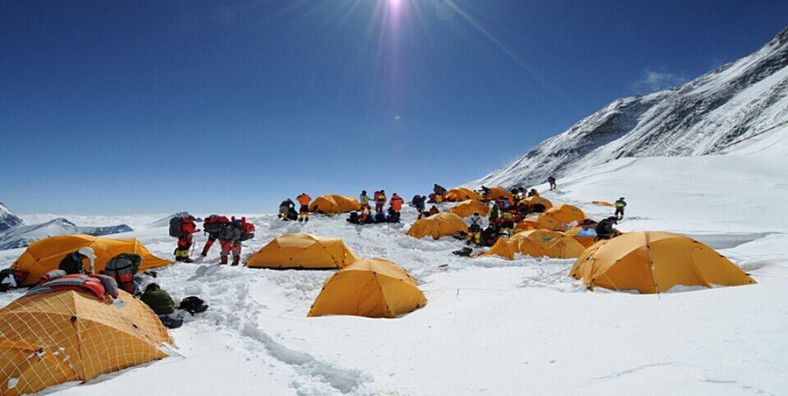
Tour Overview
This 15 Days Yunnan-Tibet Small Group Tour will first bring you to visit the city highlights of Kunming including the “world wonder” – the Stone Forest. And the top attractions of the most...
Code of Tour: YCT0000001892
Length of Travel: 15 Day
Destinations of Tour:
Departure City: Kunming
Price of Tour: Request
Type of Tour:
Features of Tour: Nature Culture History Minority Landscape
This 15 Days Yunnan-Tibet Small Group Tour will first bring you to visit the city highlights of Kunming including the “world wonder” – the Stone Forest. And the top attractions of the most popular destinations of Yunnan – Dali, Lijiang and Shnagri-La. Be amazed at the grand Tiger Leaping Gorge and enjoy your leisurely time in the three ancient towns. Then fly from Shangri-La to Lhasa to experience Tibetan Buddhism in Lhasa city such as Potala Palace. Finally head for the Everest Base Camp to appreciate fabulous natural landscape of Mt. Everest and you will see stunning lakes, grand snow mountains, vast grassland, boundless desert, majestic glaciers and so on along you way.
Highlights:
- Visit the “world wonder”-the Stone Forest and other city highlights of Kunming.
- Visit the top attractions of Dali, Lijiang and Shangri-La including the ancient towns and grand Tiger Leaping Gorge.
- Experience Tibetan Buddhism in significant monasteries along your way and in Lhasa city and Shigatse.
- Meet snown mountains, tranquil lakes, shimmering rivers, Tibetan villages and rare animals on your way.
- Enjoy the starry sky and charming sunrise of Everest Mountain.
Brief Itinerary
- Day 1: Kunming Arrival
- Day 2: Kunming
- Day 3: Kunming-Dali
- Day 4: Dali-Lijiang
- Day 5: Lijiang
- Day 6: Lijiang-Shangri-La
- Day 7: Shangri-La
- Day 8: Shangri-La-Lhasa
- Day 9: Lhasa
- Day 10: Lhasa
- Day 11: Lhasa-Shigatse
- Day 12: Shigatse-Rongbuk Monstery
- Day 13: Rongbuk-Shigatse
- Day 14: Shigatse-Lhasa
- Day 15: Lhasa Departure
Google Map
Detailed Itinerary
Day 1 Kunming Arrival
Sightseeing and Activities:the Green Lake
Accommodation:Kunming
Meals:None
You’ll begin your journey to the diverse and captivating province of Yunnan from the capital city, Kunming. Upon arrival at the Kunming International Airport, meet your local guide and transfer to the hotel.
You will take a leisurely stroll along the Green Lake, a charming area of teahouses and small boutiques selling handicrafts and beautiful local paintings. If time permits, you will have a Kunming city tour.
— Kunming is the capital of southwest China’s Yunnan province, a primarily agricultural province of 45 million. Kunming has a population of five million and is located in one of the world’s most geographically, ethnically, biologically and linguistically diverse regions. Situated at 1,900 meters (6,233ft) above sea level and 25° north of the Equator it has a rather unique and pleasant climate for a Chinese city.
Day 2 Kunming – Stone Forest-Kunming
Sightseeing and Activities:the Stone Forest, Yuantong Temple, Jingxing Flowers and Birds Market
Accommodation:Kunming
Meals:Breakfast, Lunch
You will drive 86 km to the Stone Forest. An old local saying says that ‘If you have visited Kunming without seeing the Stone Forest, you have wasted your time.’ Truly, the Stone Forest is one of the most important attractions of Yunnan.
After lunch drive back Kunming to visit Yuantong Temple, Jingxing Flowers and Birds Market in the downtown.
–The Stone Forest is in Shilin Yi Nationality Autonomous County, which is about 120 kilometers from Kunming and requires only a three-hour drive. It covers an area of 400 square kilometers (96,000 acres) and includes both large and small stone forests, as well as many other scenic spots. The Stone Forest has unique karst topography which is one of the best of its kind within China.
Day 3 Kunming-Dali
Sightseeing and Activities: Three Pagodas in Chongshen Monastery, Erhai Lake, Jinsuo Islet, Cangshan Mountain
Accommodation:Dali
Meals:Breakfast, Lunch
Take the high speed train to Dali in the morning. Arrive at Dali Railway Station, meet your local guide and transfer to the hotel. Dali which is a historically and culturally famous city of China, is renowned for her historical interest and Bai ethnic culture. After landing, you visit the Three Pagodas in Chongshen Monastery which has a history of over 1,800 years located at the foot of Cangshan Mountain facing to the Erhai Lake. Three Pagodas are made of three ancient independent pagodas forming a symmetrical triangle.
After lunch, you’ll cruise in Erhai Lake by the small boat to the Jinsuo Islet in the east Erhai Lake. There are 200 Bai ethnic families around 1000 people in Jinsuo Island.In Erhai Lake cruise, you will enjoy the green Cangshan Mountain and the Three Pagodas from a far as well as lots of birds and seagulls flying over the lake.
At last, you will visit Dali Ancient Town, walk around the Foreigner Street and enjoy the relax time with local people. After climbing up to the Ancient City Wall of Dali, you will have panoramic view of the Erhai Lake.
Day 4 Dali – Lijiang by private car
Sightseeing and Activities:Xizhou Old Town, Zhoucheng Village,Black Dragon Pool, Dongba Museum, Lijiang Old Town, Naxi Concert
Accommodation:Lijiang
Meals:Breakfast, Lunch
Explore Dali Ancient Town in the early morning, then, head for Xizhou Old Town to fully appreciate Bai-style traditional architectural courtyards, enjoy the Three-Course Tea Ceremony and explore their distinctive culture. Visit Zhoucheng Village and the Bai people’s Tie-dyeing Cloth Workshop where you can take some special souvenir with the Bai ethnic style.
After lunch, drive to explore Lijiang Old Town. Lijiang Old Town has a history more than 800 years; it was listed as the World Cultural Heritage by the UNESCO 1997. Here you will see the wonderful wooden architecture of Naxi ethnic people. After dinner, you will attend the Naxi Orchestral Music in Naxi Concert in Lijiang Ancient Town.
–Lijiang Ancient Town is a largely Naxi settlement first built 800years agao, located at the foot of the Lion Hill and completely surrounded by the new city of Lijiang.In December 1986, the State Council designated it a famous ancient historical and cultural city of national caliber. In 1997, UNESCO made Lijiang a World Cultural Heritage Site. Most of the dwellings, scattered at the foot of a mountain or by the river, are brick-and-tile structures with carved doors and painted windows. Traffic across the river is facilitated by a large number of tiny stone bridges. The town is similar to the Zhouzhuang Water Town in the south of the Yangtze River.
Day 5 Lijiang
Sightseeing and Activities:Jade Dragon Snow Mountain, Baisha Mural , Shuhe Old Town
Accommodation:Lijiang
Meals:Breakfast, Lunch
Enjoy the sunrise of the Jade Dragon Snow Mountain and Lijiang Ancient Town in the morning, drive about 30KM to Ganhaizi Meadow(3100M), you will take the sightseeing bus for a short visiting through the Baishuihe River, take the chairlift up to visitthe Spruce Meadow of Jade Dragon Snow Mountain. You will hike around1 hours in the original forest in Spruce Meadow (3200M).
Afterward, Move to Basha Villge to Visit the Baisha Mural about 600 years old, which is one part of the World Cultural Heritage by the UNESCO 1997. Finally explore Shuhe Old Town . Nestled at the foot of Jade Dragon Snow Mountain, 6 km northwest of Lijiang old town, Shuhe was once a staging post at ancient Tea & Horse Road. With an altitude of 2440 meters above sea level, it is a tranquil town with a population of about 3000 people. Along with its sister town Lijiang, it is also part of the UNESCO Heritage site.
Day 6 Lijiang – Tiger Leaping Gorge – Shangri-La
Sightseeing and Activities:the First Bend of Yangtze River, Shigu Ancient Town, Stone Drum, Iron Chain Bridge, Tiger Leaping Gorge, Dukezong Ancient Town, Giant Prayer Wheel
Accommodation:Shangri-La
Meals:Breakfast, Lunch
From Lijiang, you’ll drive about 60KM to the First Bend on the Yangtze River with imposing gorge scenery, visit the Iron Chain Bridge,the Red Army’s Long March Memorial Monument in the Shigu Town. The town of Stone Drum got its name from a large, cylindrical, marble tablet shaped like a drum. The scenery is magnificent as the road running through the Lijiang valley which is filled with wheat fields and drying haystacks. You will have an experience of the floating from the First Bend of the Yangtze River to Longpan Town, after one hour floating, meet the driver and trasfer to Tiger Leaping Gorge.
Visit the Tiger Leaping Gorge, the deepest gorge in the world. With 34 rapids of the Yangtze River, it is called the Jinsha in this area because you can find gold in the river. Afternoon, you’ll head for Shangri La, the former Zhongdian which is welknown as the paradise destination for every tourist. Upon arrival in Shangri La, you will have entered the Tibetan cultural area and a landscape of barley fields and yaks scattered in the valleys. Walk around Dukezong Ancient Town, an important town of the Ancient Tea-horse Trade Caravan from Yunnan to Tibet and India.
— Tiger Leaping Gorge is on the Jinsha River of the upper reaches of the Yangtze, located 105 kilometers south of Shangrila County. The gorge is 17 kilometers long with a drop of 213 meters. Tiger Leaping Gorge is divided into three sections: Upper, Middle and Lower Hutiao. At the narrowest spot the river is only 30 meters wide. The mouth of the gorge is 1,800 meters above sea level. The river is flanked by Yulong and Haba snow mountains, with a height difference of 3,900 meters. It is one of the deepest gorges in the world.
Day 7 Shangri-La
Sightseeing and Activities:Songzanlin Monastery, the Bita Lake & Shudu Lake, Dukezong Ancient Town, the Giant Prayer Wheel
Accommodation:Shangri-La
Meals:Breakfast, Lunch
In the morning, visit the Ganden Sumtseling Monastery, the largest Tibetan monastery in Yunnan. Songzanlin Monastery has another alias – ‘the little Potala Palace ‘, so named because the whole monastery is in the traditional style with mysterious atmosphere. And afterwards you’ll visit the tranquil Bita Lake & Shudu Lake in Pudacuo National Park. Pudacuo National Park is located in one of the most biologically-diverse regions of the world. While the region comprises only 0.7 percent of China’s land area, it contains more than 20 percent of the country’s plant species, about one-third of its mammal and bird species and almost 100 endangered species.
Visit Dukezong Tibetan Ancient Town in the late afternoon, climb up to the top of Guishan Hill or tortoise Hill, you will see the largest Prayer Wheel of the world and have a panoramic view of shangrila county and Dukezong Ancient Town. Finally, you will have an option to visit a Tibetan’s family to experience the local life in the bonfire party with Tibetan dance and music and you will try Tibetan home-made yak and cheese.
Day 8 Shangri-La – Lhasa
Sightseeing and Activities:Lhasa city tour
Accommodation:Lhasa
Meals:Breakfast, Lunch
Take the flight to Lhasa, the capital city of Tibet Region. You are warmly welcome to Tibet by saying Tashi Delek at the airport by your tour guide and an experienced driver and send you back to your well reserved hotel. Then have a good rest to acclimatize the high altitude in the afternoon. Overnight at Lhasa.
–Lhasa, is capital of China”s Tibet Autonomous Region. It has a history of more than 1,300 years a political, economic, cultural and transport center of the region. Lhasa has an area of 30,000 square km with a population of 400,000. Lhasa is home to the Tibetan, Han as well as other ethnic groups, but the Tibetan ethnic group makes up about 80 percent of the total population.
Day 9 Lhasa
Sightseeing and Activities:The Potala Palace,Jokhang Temple,Barkhor street
Accommodation:Lhasa
Meals:Breakfast, Lunch
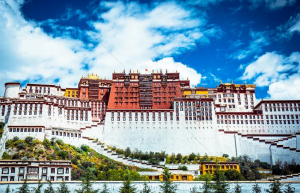
Morning section to visit the famous Potala Palace and explore the grandest of this myriad chapels, its audience halls, the jeweled and Golden burial chortens(stupa Tombs) of past Dalai Lamas, and tremendous number of Buddhist frescoes, thangkas, combinations of mandala, figures of the Buddha. Made of precious metal.
Afternoon section visiting to the holist temple in Tibet, the Johkang Temple, built during songtsen gonpo’s reign by princess wencheng of tang dynasty, 647 A.D. The inner circuit is also situated inside the temple and is lined with prayer-wheel and murals outlined in gold on red background, which depict the thousand buddhas, interspersed with stupas and relief-images. Johkang is circuit.
The circular pilgrim route around Jokhang temple is called barkhor and later flourished, forming the embryo of the city. The barkhor market itself is the most active in all tibet,and it is possible to purchase traditional Tibetan artifacts, religious implements, antiques, books, Tibetan music instrument, Thangkas, and tradition tibetan clothes etc.
Day 10 Lhasa
Sightseeing and Activities:Sera Monastery, Drepung Monastery
Accommodation:Lhasa
Meals:Breakfast, Lunch
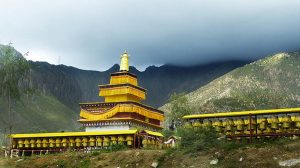
Drepung Monastery is situated at the foothill of a mountain and was founded by Jamyang Choeje in 1416. It was once home of 10000 monks and Ganden podrang in Drepung is famous it was the government centre during fifth dalai lama and later moved to the famous potala palace during fifth dalai lama. By the time you can also vist the Nechung monastery located 1km southeast of Drepung and is the abode of the protector deity pehar and the seat of the state Oracle of Tibet.
In the afternoon exploring the Sera Monastery which was founded in 1419 by Tsongkapa’s disciple Jamchen Choeje. The most attractive is that Monks debiting is held there in the courtyard at around 6-7:30 in the afternoon section. Overnight at Lhasa (Notice, the sequence of sightseeing of first two days may be adjusted according to the reservation of visiting Potala Palace).
Day 11 Lhasa-Gyangtse-Shigatse
Sightseeing and Activities:Nyangchu Valley, Yamdro-tso lakes, karo-la glacier,Kubum monastery
Accommodation:Shigatse
Meals:Breakfast, Lunch
Passing by the green farmland of Nyangchu Valley, Yamdro-tso Lakes, Karo-la Glacier roadside at 4960m, We move westwards to the second biggest city Shigatse, the Area spiritually hosted by Pamchan Lama.
The most important attraction for today is Yamdro-tso Lake and Kubum Monastery in Gyantse. From the top of the pass kangpa-la at 4700m high in clear weather, you can see the fabulous shade of deep turquoise, Yamdro-tso Lake is shaped like coiling scorpion with deep blue in colour.
Kubum Monastery, means 100,000 images in Tibetan, is the town’s foremost attraction, The 35m-high chorten (stupa) with its white layers trimmed with decorative stripes and its crown-like golden dome, is awe-inspiring. You can visit every chambers in the monastery.
Day 12 Shigatse – Rongbuk Monstery
Sightseeing and Activities:Mt. Lhotse(8516m),Mt. Everes(8848m), Mt. Cho Oyu(8201m),Mt Mayalu(8463m), Rongbuk Monastery
Accommodation:Rongbuk Monastery
Meals:Breakfast, Lunch
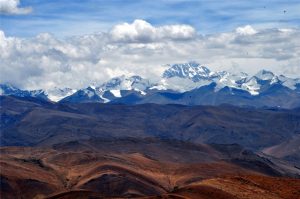
Drive westwards the Friendship way to Tingri County. On the way to Mount Everest you will pass the checking point with your TTB permit, travel permit and passport, and purchase the entrance of Everest Base Camp.
There is about 90km bumpy road from Tingri to Rongpuk, road is under construction. From Tingri to E.B.C with the very rough road, pass the wild grassland, cross the rapids river and high mountains. If it is in clear whether, you can have a glimpse of 4 mountains which is 8000m high or more, such as: Mt. Lhotse(8516m), Mt. Everes(8848m), Mt. Cho Oyu(8201m),Mt. Mayalu(8463m). Overnight at Rongphu Monastery Tent.
Day 13 Rongphu Monastery – Shigatse
Sightseeing and Activities:Rongphu Monastery, the sunrise of Mt. Everest, Mt.Evrest Base Camp
Accommodation:Shigatse
Meals:Breakfast, Lunch
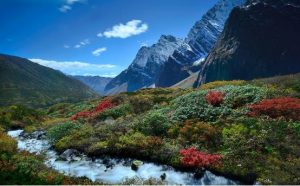
Early in the moring to see the sunrise from Rongbuk Monastery then to view Mt. Everest. It is fabulous and splendid. After walking arrive the place get on the animal carriage then use half of an hour arrive at Everest Base Camp ( Or you also can trekking to Base Camp around 1.5-2 hours one way. It’s interesting and much more warm, but hard to breath).
Hiking up to the top of the photo point to take pictures of the splendid- Mt. Everest. Then late in the afternoon around 13:00 go down from E.B.C back to Tingri by friend-ship highway back to Shigaste.
Day 14 Shigatse-Lhasa
Sightseeing and Activities:the Tashilunpo monastery, Lhasa City
Accommodation:Lhasa
Meals:Breakfast, Lunch
We spend about 4 hours to drive back to Lhasa from Shigatse, on the way, we will visit the largest Monastery in west Tibet, the Tashilunpo Monastery, as the last but famous historic sites for your Tibet tour. Tashilunpo Monastery is one of the the six great Gelukpa institutions and was founded in 1447 by a disciple of Tsongkapa, Genden drup who was first dalai lama. Jamkhang Chenmo, containing the world’s largest gilded copper image(26m high) of future god Jampa. Drive along the Friend-ship Highway back to Lhasa.
Day 15 Lhasa Departure
Sightseeing and Activities:Depart from Lhasa
Accommodation:None
Meals:Breakfast
You will be free in Lhasa City in the morning until you take the flight back. Service ends.
Recommended Hotels
| Destination | 5 Star | 4 Star | 3 Star |
| Kunming | Crowne Plaza Kunming City Centre | Jinjiang Hotel | Longteng Hotel |
| Dali | Dali Hilton Hotel | Landscape Hotel | Taiheju Hotel |
| Lijiang | Lijiang InterContinental Resort | Wangfu Hotel | Louwailou Hotel |
| Shangri-La | Shangri-la Resort | Zhaxidele Hotel | Maoyuan Hotel |
| Lhasa | Luxury St. Regis Lhasa Resort | Lhasa Gang Gyan Hotel | Lhasa Xiongbala Hotel |
| Shigatse | / | Shigatse Manasarovar Hotel | Jiumu Yamei Hotel |
Service Included:
-
Tibet travel permit and all other necessary permits to Tibet;
-
All entrance ticket fees for all tourist sites listed in the itinerary;
-
Personal knowledgeable English-speaking Tibetan local tour guide;
-
Personal comfortable, clean and safe vehicle with reliable Tibetan local driver; vehicle ranging from 4WD land cruiser to minibus depending on your group size;
-
All lodging listed in the itinerary; it’s your decision about the accommodation class: luxury 5-star international hotel, comfortable 4-star hotel, economic 3-star hotel or budget hostel, guesthouse or tent. Please tell us your accommodation preference when submitting the enquiry; we will arrange the best-value hotels for you.
-
Domestic flight/train tickets listed in the itinerary;
-
All meals listed in the above itinerary.
Service Excluded:
-
International flight to and out of China;
-
Chinese visa (Note: we could help you with the Chinese visa application, like providing the invitation letter, presenting the hotel or domestic flight reservation copies, etc that you may need. )
-
Domestic flight/train not listed in the itinerary. (We can provide you the domestic flight/train ticket booking service at the BEST discount price; please contact us our travel experts for the details.)
-
Meals not specified in the itinerary; usually it costs about USD3-15 per person for one meal in TAR (Tibet Autonomous Region).
-
Tips and gratitude to tour guide and driver;
-
Personal expenses, like laundry, phone call, snacks, soft drinks (please do the best to avoid the alcoholic beverages during your Tibet trip), optional tour activities, etc.
Travel Tips:
1. What Are the Features of Our Group Tours
Our Group Tours are budget tour packages with great service which have covered the most popular destinations in Tibet and Yunnan with reasonable trip lengths. Joining in our group tours, you will choose your travel dates from our fixed departures and travel in a small group with maximum members of 12 people.
2. Tibet Permits
There are several permits required to visit Tibet. Tibet Entry Permit, issued by Tibet Tourism Bureau, is the most important one which has to be obtained before your trip because you must have it to take your flight/train to Tibet. To get the permit, you have to book a Tibet tour with us, and send us your passport and Chinese visa about 20 days in advance, and then let us apply for the permit (all Tibet permits can only be applied by travel agency). If you travel to other prefectures like Shigatse, Nyingchi, Shannan, etc, you also have to obtain an Alien Travel Permit. If you travel to Mount Everest, you have to obtain a Border Permit. (Tibet Discovery, with office in Lhasa, has always kept up with the latest news on Tibet Permits. Traveling with us, all your permits are guaranteed as long as you are qualified to the requirements.)
3. Available Months to Visit Tibet
Generally speaking, you can travel to Lhasa all year around. But months from April to October are more recommended. If you want to extend your trip to other regions, such as Shigatse, Mount Everest, Namtso, Ngari, etc, you are suggested to visit during April to October. Other months are usually very cold, and possible have heavy snow, especially in regions like Mount Everest, Mount Kailash, Namtso Lake, etc.
4. High Altitude Sickness
The average altitude of Tibet is about 4000 meters above the sea level (Lhasa: 3700m; EBC: 5200m; Namtso: 4718m). You may suffer a bit from High Altitude Sickness in the beginning days of your Tibet trip if you haven’t had rich high plateau travel experience. But don’t worry too much, the high altitude can be acclimatized usually in 2~3 days. Our suggestion is to take a physical examination and get suggestions from your doctor, and also bring some medicines to prevent from High Altitude Sickness before your trip. While in Tibet, you should keep warm all the time, avoid strenuous activities, drink more water and eat more vegetables and carbohydrates. You’d better not take showers during the first two days after your arrival at Tibet. If you don’t feel well, get help from your tour guide or go to the hospital without any delay.
5. How to Go to Tibet
Basically you have two options – flight and train. Currently, you can take a flight to Lhasa from Beijing(4.5hrs), Xian(3.7hrs), Chengdu(2.5hrs), Chongqing(3hrs), Kuming(3hrs), etc. Among all these cities, Chengdu and Xian have more frequent flights to Lhasa. You can also fly to Lhasa from Kathmandu(1.5hrs) .Xian(32hrs), Chengdu(43hrs), Shanghai(47hrs), Chongqing(42hrs), Lanzhou(25hrs), Xining(22hrs), Guangzhou(54hrs).
6. Packing and Wearing Ideas
Firstly you can’t forget your passport and Chinese Visa. A large backpack and a smaller one are recommended (the smaller one can be used for daily activities). Also bring the necessary medicine you need. Other stuffs like sunglasses, snow glasses, hats, lip balm, sun block are recommended.
As for wearing, you are suggested to dress in layers (both thin and thick jackets). Down jacket is necessary in Spring and Autumn. A pair of durable and comfortable shoes is necessary.

















